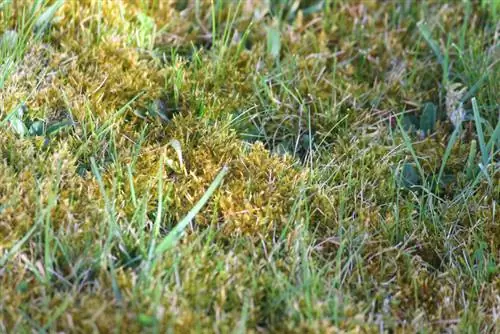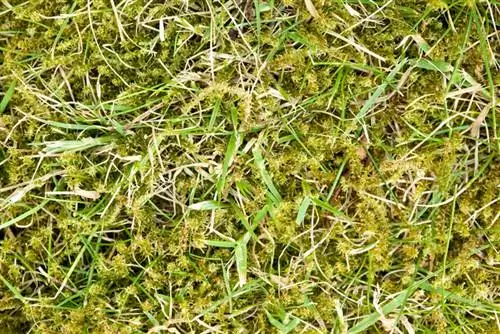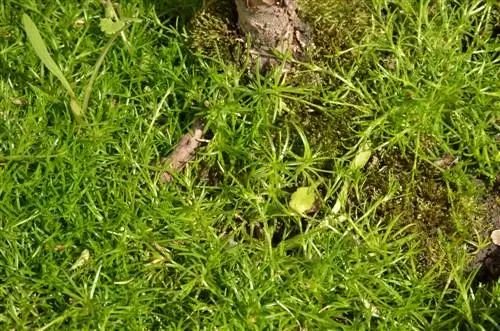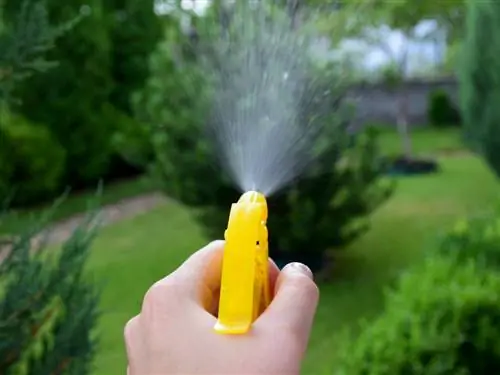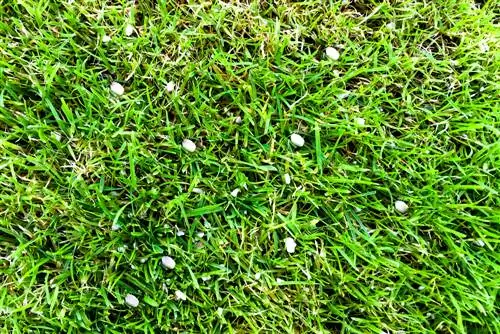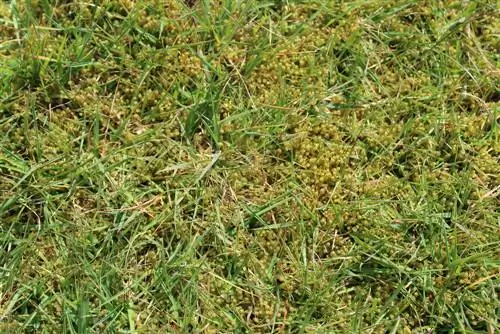- Author admin [email protected].
- Public 2023-12-16 16:46.
- Last modified 2025-01-23 11:20.
Lime is not the only remedy for a mossy lawn, although it is a very effective one. Although moss can be attributed to a variety of causes, acidic soil is considered the primary trigger for the dilemma. These instructions explain how to properly combat moss in the lawn with lime.
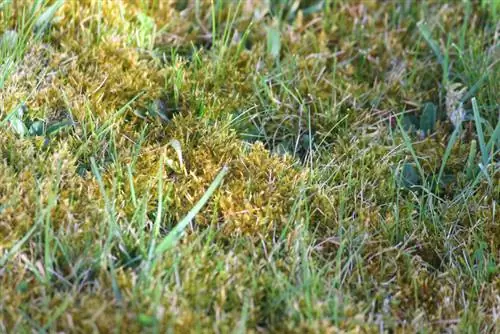
How do I fight moss in the lawn with lime?
To combat moss in the lawn with lime, you should first test the pH value of the soil. If the value is below 6.5, scarify the lawn, remove the moss and, depending on the condition of the soil, spread 130-500 grams of lawn lime per square meter. Then water the area.
PH value test creates clarity about the lime requirement
Although moss is considered an indicator plant for acidic soil, you should be sure with a simple do-it-yourself test. Liming only helps against moss if the pH value is actually too low for the noble lawn grasses. Otherwise, buying lawn lime is a waste of money. Test sets can be purchased at any hardware store and garden center for around 5 euros. It's that easy to use:
- Take soil samples from 10 places in the lawn from a depth of 8 to 10 cm
- Mix these samples well in a container
- Take 100 g of it and stir it into 100 ml of distilled water
After 10 minutes, insert the test strip into the sample. Using a coloring reaction and the attached table, you can see what the pH value is like in mossy lawns. If the result is well below 6.5, the moss is almost certainly due to soil that is too acidic. Lawn grasses achieve their optimum at a pH value between 6.5 and 7.0.
Soil condition defines the right dose
In order to permanently remove moss from the lawn, it is important to use the right amount of lime. A pH value that is too low affects the growth of the grass, as does an alkaline value that is too high. It is obvious that a light, sandy subsoil processes the lime much more effectively than a heavy clay soil. The following table gives tried and tested guideline values:
| Cost overview | Price | ||
|---|---|---|---|
| Reference values for the amount of lime per square meter of lawn area | Light, sandy soil | Medium, loamy-sandy soil | Heavier, loamy-clay soil |
| pH value below 5, 3 | 150-250 grams | 350-480 grams | 350-500 grams |
| pH value from 5.3 to 6.5 | 130-180 grams | 180-280 grams | 280-380 grams |
| pH value from 6.5 | do not lime | do not lime | do not lime |
How to properly lime your lawn
It is not enough if you spread lime on the mossy lawn. The material can hardly penetrate the dense felt down to the roots. How to do it right:
- In March/April, scarify the lawn lengthwise and crosswise
- Sweep away the combed out moss
- Pour the lawn lime into a spreader and distribute it
Please walk the lawn with the lime spreader so that the paths do not overlap and an overdose occurs. In the last step, water the green area extensively.
Tip
If the noble grasses in the mossy lawn also turn yellow, the problem is not only the low pH value, but also a lack of magnesium. In this case, use dolomite lime. This is obtained from natural sedimentary rock and enriched with magnesium.

